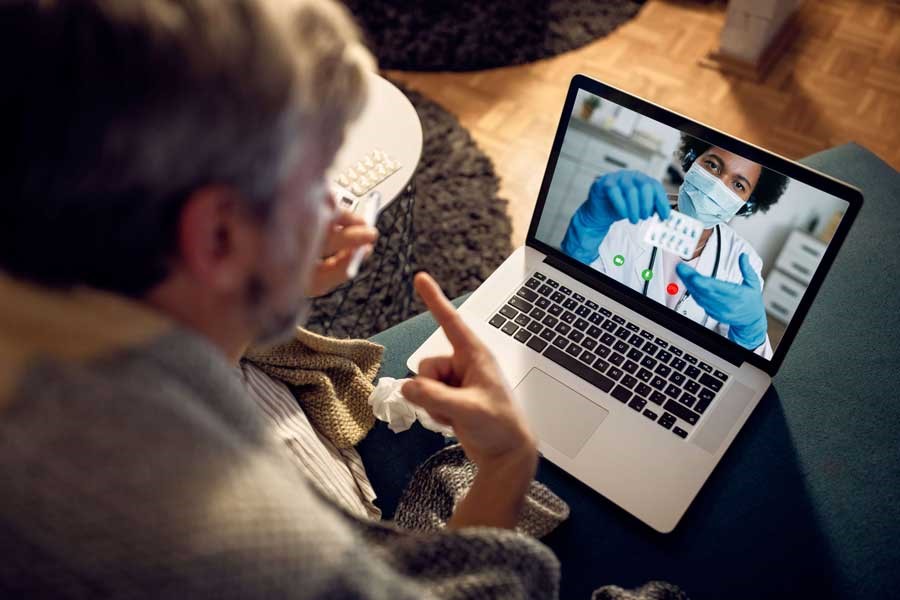As the global population ages, healthcare systems face the challenge of meeting the growing needs of elderly patients. Traditional in-person consultations can be physically demanding for seniors, especially those with mobility issues, chronic conditions, or living in remote areas. Telemedicine, using digital communication tools to provide healthcare services remotely, is emerging as a game-changer in elderly care. It’s not just a convenience it’s a revolution that is improving the quality of life for elderly patients by bridging the gap between them and accessible, efficient healthcare.
The Rise of Telemedicine in Elderly Care
Telemedicine has seen rapid growth in recent years, driven by advancements in technology and the increasing demand for remote healthcare solutions. With the COVID-19 pandemic, healthcare providers and patients alike have turned to telemedicine as a safer alternative to traditional care. For elderly patients, this shift is particularly beneficial, offering a new level of care that was previously difficult to access.
Overcoming Barriers to Care
Elderly patients often face significant challenges in accessing healthcare, including transportation issues, physical limitations, and geographical barriers. Many seniors live far from medical facilities or have difficulty travelling due to arthritis or heart disease. Telemedicine eliminates these obstacles by allowing patients to consult with healthcare professionals from the comfort of their homes.
For seniors with chronic illnesses who require regular check-ups, telemedicine offers a lifeline. Regular virtual consultations mean fewer missed appointments, timely medical advice, and early detection of issues that could escalate without intervention. This is particularly vital for managing conditions like diabetes, hypertension, or dementia, where consistent monitoring is crucial.
Enhancing Quality of Care
Telemedicine enhances the quality of care for elderly patients by facilitating faster communication with healthcare providers. Through video calls or secure messaging platforms, patients can receive instant medical advice, medication adjustments, or even emotional support. This immediacy is especially valuable in emergencies, where quick access to medical professionals can be life-saving.
In addition, telemedicine platforms often allow family members or caregivers to be present during consultations, providing a support system for seniors. This not only ensures clear communication but also strengthens the overall healthcare experience, ensuring that loved ones are informed and involved in the care process.
Addressing the Digital Divide
While telemedicine offers many advantages, there is still a digital divide that must be addressed. Not all elderly patients are familiar with modern technology or comfortable using devices like smartphones or computers. However, efforts are being made to make telemedicine platforms user-friendly and accessible. Healthcare providers and families are also playing a key role in educating seniors on how to navigate these technologies. Additionally, many programs offer simplified interfaces, easy-to-use apps, and even tech support services designed specifically for older users.
The Future of Telemedicine for Seniors
Looking ahead, the integration of telemedicine into elderly care is only expected to grow. Innovations like remote monitoring devices, wearable technology, and artificial intelligence will further improve the efficiency and effectiveness of virtual healthcare for seniors. Remote devices that track vital signs or medication adherence will allow for continuous monitoring, reducing the need for hospital visits and preventing health crises before they occur.
Moreover, as healthcare systems increasingly adopt telemedicine, there is potential for reducing costs, both for patients and providers. Fewer hospitalizations, reduced transportation costs, and quicker access to medical professionals can make elderly care more affordable while maintaining high standards of care.
Conclusion
Telemedicine is revolutionizing the way elderly patients receive care, making healthcare more accessible, efficient, and personalized. It bridges the gap between seniors and their healthcare providers, ensuring that even those with physical, geographical, or technological limitations. Telemedicine will undoubtedly play an even more integral role in elderly care, creating a future where seniors can live healthier, more independent lives with the support of virtual healthcare services.Telemedicine is no longer just a convenience; it’s a vital tool in the transformation of elderly care, offering a lifeline to millions of seniors around the world.
If you still need tips and advice on Telemedicine, our team is more than glad to attend to you and we are just one call away!




